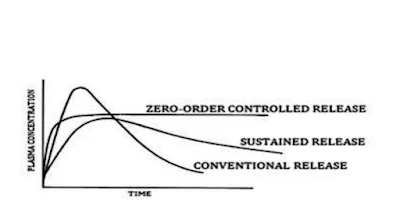Difference between prolonged release and sustained-release tablets
The terms sustained release and prolonged release are interchangeable since they indicate the same thing. The difference between prolonged-release and sustained-release tablets, on the other hand, is obvious. In a general sense, both types of these tablets are two different types of Modified-release tablets.
What is sustained release tablet?
Sustained-release tablets are a type of dose in which medicine is given to a patient at a predetermined or calculated rate with the purpose of maintaining a predetermined drug concentration in the patient's digestion system for a predetermined duration of time while minimizing side effects.
Sustained release tablets products
- Acebrophylline Sustained release tablets 200 mg
- Aceclofenac Sustained release tablets IP 200mg
- Paracetamol Sustained release tablets 1000mg
- Progestrone Sustained release tablets 200 mg
- Lornoxicam Sustained release tablets 16 mg
Prolonged release tablet uses
While prolonged-release tablets are meant to have an effect after a certain amount of time, they are known to be given in little doses over a lengthy period of time with no time or concentration rate specifications.
Prolonged release tablets products
- Metformin hydrochloride Prolonged release tablets IP
- Etodolac Prolonged release tablets IP
- Paroxetine Prolonged release tablets IP
- Prolonged release Tamsulosin tablets BP
- Isosorbide Prolonged release tablets BP 30mg
Tablets with a sustained release provide a more regulated release. This occurs when a capsule is produced and loaded with little pellets of pharmaceuticals with various coatings that will not disintegrate immediately after administration but will release their contents overtime at a predetermined rate.
Longer-acting tablets and capsules postpone drug delivery by dissolving at a slower and more consistent rate in the body, allowing patients to take drugs less frequently. This is primarily for chronic illness patients who can take drugs less frequently during the day.
ALSO READ: What is the difference between syrup and suspension
Difference between sustained release and controlled release
Prolonged-release is usually time-dependent and delayed in oral dose formulations. Long-acting drugs and ointments are regularly used to target and heal specific regions of the body system that are resistant to traditional medications and ointments. This isn't the case with sustained-release tablets, which are given slowly to retain a precise amount of medicine in the bloodstream during a drug administration or injection to keep the healing process moving ahead.
The most common use of prolonged-release pills is to treat specific body regions or areas. They are released either on the precise part or around the target place that needed to be cured once they have been taken into the blood system. While there are no specific body regions or components targeted by the prolonged-release,
Sustained-release tablets are frequently time-release medications that might be released instantly or in limited amounts following intake. Pills and capsules are examples. The time and rate at which the formulations are administered are defined in order to limit the influence on blood levels, reduce the effects on the intestinal system, and even lengthen the half-life of the medications.
This is not the case with prolonged-release formulations, as the medications are designed to stay in the bloodstream for longer. This results in fewer drug administrations, a faster healing process, and a stable blood level because patients are more obedient when taking drugs fewer times.
Prolonged-release medications, on the other hand, may not be entirely absorbed into the bloodstream, leading to chronic conditions like stomach problems returning. Furthermore, prolonged-release pills are often more expensive than normal and other medications, making them unaffordable for people with limited financial resources.





Please not enter any spam link in the comment box.